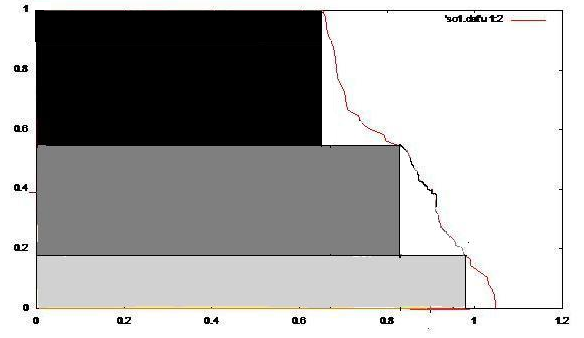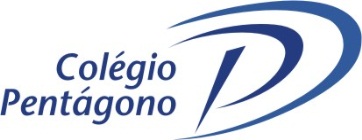guidelines for camera-ready manuscript preparation contents: introduction 1. text and type area (margins) 2. front matte
GUIDELINES FOR CAMERA-READY MANUSCRIPT PREPARATION
Contents:
Introduction
1. TEXT AND TYPE AREA (Margins)
2. FRONT MATTER
3. PAGINATION
4. RUNNING HEADS
5. CHAPTER OPENERS
6. TEXT
7. SUBHEADS
8. FIGURES (Line Art Drawings) AND TABLES
9. NOTES
10. REFERENCES
11. PERMISSIONS
12. OVERALL MANUSCRIPT
13. WHERE SHOULD I GO FOR HELP?
14. SUBMISSIONS
VOLUME EDITOR GUIDELINES FOR CAMERA-READY MANUSCRIPT PREPARATION
Introduction:
The following guidelines are provided to assist you in the preparation
of your
camera-ready manuscript. They can be used to format a consistent page
setup
(style) which will help you produce a manuscript ready for press.
These instructions are only a guide. They can be used in reference to
both a manuscript created in word, as well as a manuscript created in
LaTeX. Consistency and correct type area margins (see below) are the
most important aspects in your manuscript preparation.
PAPER
Please use the highest quality paper available to you for your final,
camera-ready manuscript.
1. TEXT AND TYPE AREA (Margins)
This one basic requirement must be adhered to:
Type area on a page is 4 3/4" wide and 8" long (12 cm. x 20 cm.)
inclusive of running
heads and folios (page numbers). If folios not included, please leave
appropriate space
to strip in. This is a maximum. No text or figures should fall out of
this text page area.
All text should be fully justified. Margins for this type area: top
1.75", bottom 1.3", left
1.9", right 1.8", header/footer 1.5" (header/footer margin is from
edge of page). These
margins are a guide only. Adjust as necessary to obtain correct (4
3/4" x 8") type area.
2. FRONT MATTER
Front matter should be numbered in roman numerals (see Pagination for
additional
information) and should be arranged in the following order:
Page i Half Title Page; i.e., the book’s title only. (Volume Editor
provides draft and Publisher will prepare the final version of this
page.)
Page ii Series Page (Publisher will prepare this page.)
Page iii Title Page; this should include the full title, the sub-title
(if any), the name and affiliation of each author/editor, and
the name of the publisher and city of publication. (Volume Editor
provides draft and Publisher will prepare the final version of this
page.)
Page iv Copyright Page (Publisher will prepare this page.)
Page v Contents (If there is a dedication page, then that would be
page v, page vi would be blank, and the Contents would
then begin on page vii). When applicable, the Contents page should
include
the List of Contributors, Foreword, Preface, Acknowledgments, etc.
Contents should contain chapter numbers, titles and page numbers.
Section titles and page numbers can be included if desired but an
overly detailed listing (sub-sub sections, for example) should be
avoided.
Individual chapter authors’ names should be included on the contents
page as well. Names should be placed below the chapter title, before
the chapter contents listing.
Order of remaining front matter is as follows:
Foreword
Preface
Acknowledgments
The opening page of each new section of the front matter should all
begin on new recto
(or right handed) pages. Add blank pages as necessary to achieve this.
3. PAGINATION
a. Front Matter: For page numbering, use a drop folio for the opening
recto (odd)
page of each chapter and then place each of the folios in the upper
left and
right-hand corners of the pages thereafter. Numbering should appear
beginning
with page v.
b. Chapter Pages: The opening page of chapter 1 is arabic numeral page
1. The volume
editor is responsible for paginating the entire manuscript. For page
numbering,
use a drop folio for the opening recto (odd) page of each chapter and
then
place each of the folios in the upper left and right-hand corners of
the pages
thereafter.
4. RUNNING HEADS
The preferred style is Book title on verso (left-hand pages) and
either Author(s) Name or Chapter Title on recto (right-hand pages).
Running heads should be only one line. Again, consistency throughout
the manuscript is more important stylistically.
5. CHAPTER OPENERS
Each chapter should begin on a new recto (new odd-numbered,
right-hand) page. (If
chapter 1 ends on page 6, chapter 2 begins on page 7. If chapter 1
ends on page 5, page
6 is blank and Chapter 2 begins on page 7.) Text of chapter opener
should begin 1 3/4"
from top of paper (position flush left).
Arrange the text of your chapter opener in the following order:
a. Chapter Number: 15 point type (Times Roman)
Title: Bold Letters. 15 point type (Times Roman)
Chapter author(s): Upper/lower case, 11 point type (Times Roman)
Affiliation(s): Upper/lower case, italic, 9 point type (Times Roman)
Chapter author(s) and affiliation(s) is required for edited volumes
only.
Abstract: Upper/lower case, italic, 9 point type (Times Roman)
Keywords: Upper/lower case, italic, 9 point type (Times Roman)
** Please do not include author email addresses on the title page**
b. Leave 3 line spaces between title (or subtitle) and author.
c. Leave 5 line spaces between author/affiliation and start of text of
chapter.
d. Be sure to include an abstract and keywords.
6. TEXT
Text type should be 11 point Times Roman. Text should be single
spaced. First line of
all paragraphs should be indented. It is not necessary to insert line
breaks between
paragraphs.
7. SUBHEADS
Levels of subheads should be easily distinguishable from each other
without the use of
numbers. There should be two line spaces before each subhead and one
line space after
each subhead.
Examples of Subhead Style:
l. FIRST LEVEL SUBHEAD
(13 point bold, caps, flush left)
l.l Second Level Subhead
(13 point bold, upper and lower case, flush left)
l.l.l Third Level Subhead
(11 point bold, upper and lower case, flush left)
Use FIRST LEVEL SUBHEAD style for the notes, references and index
section headings.
8. FIGURES (Line Art Drawings) AND TABLES
FIGURES
Figures and tables may appear printed directly in the text.
Figures should meet the following minimum requirements:
600 dpi resolution for halftones/shaded images
800 dpi resolution for line drawings
Figure should appear soon after the citation in the text.
PLEASE NOTE: IFIP VOLUMES DO NOT PRINT IN COLOR.
Please keep this in mind when creating your manuscript.
Legends/Captions for figures
Text type should be 9 point Times Roman italic (eg; Figure 1.
Caption). A caption
should be provided for each figure. The legend should be typed into
the manuscript,
directly beneath the figure.
Legends are to be listed in numerical order, labeled as “Figure 1”,
“Figure 2”, etc.
within each chapter.
TABLES
Indent tables slightly from the left margin, unless it is necessary to
use the full width of
the page.
Titles/Captions for tables
The table caption should be typed to the width of the table itself and
typed above the
table. Text type of table caption should be 9 point Times Roman italic
(eg., Table 1.
Caption).
Number the titles of the tables consecutively in the order of their
first citation in the
text. Be sure that each table caption is headed as “Table 1”, “Table
2”, etc. within each
chapter.
Both figures and tables must be cited in the text.
9. NOTES
The Springer style is endnotes which should appear at the end of a
chapter before the
references. End notes text type should be 9 point Times Roman.
10. REFERENCES
References text type should be 9 point (Times Roman) at the end of
each chapter.
You are responsible for the accuracy of the references in your volume.
All names;
dates; article, journal, and volume titles; and volume and page
numbers should be double-checked before submission. All entries in
the reference section must be cited in the text. The list of works
cited should appear at the end of the chapter with the title,
“References”. General samples follow.
References should be numbered in the order of their first mention in
the text. Alternatively, references can appear in alphabetical order
at the end of the
chapter. The most important thing is that they are consistent
throughout the volume.
The reference list should be in the style indicated by the following
examples:
1. K. Kiili, , Towards a participatory multimedia learning model,
Education and Information Technologies. Volume 11, Number 1, pp. 21-32
(2006).
2. B. Donnelan, Larsen T., Levine L., Degross J., The International
Federation for Information Processing (IFIP), Volume 206, The Transfer
and Diffusion of
Information Technology for Organizational Resistance (Springer:Boston,
2006).
3. Whelan, Eoin, 2006, The International Federation for Information
Processing (IFIP), Volume 206, The Transfer and Diffusion of
Information Technology for Organizational Resistance, B. Donnelan,
Larsen T., Levine L., Degross J. (Springer:Boston), pp. 21-31.
4. Springer, Dordrecht (January 7, 2005); http://springeronline.com.
Note: General guidelines for using and citing internet sources
include:
1. Direct readers as closely as possible to the information you are
citing
2. Wherever possible, use addresses that point directly to the cited
document
rather than the home page
.
11. PERMISSIONS
The author is responsible for obtaining the necessary permissions to
quote or reproduce
material, including figures, from already published works and to
reprint from other
publications. An appropriate credit line should be included.
12. OVERALL MANUSCRIPT
Depending on your skill level, you can send us the electronic files in
a variety of ways:
1.
Fully compiled manuscript in its source version of LaTeX or MS
Word, and the fully compiled corresponding pdf.
2.
Individual, paginated and formatted chapters in the source files,
and the fully compiled corresponding pdf.
3.
Individual, paginated and formatted chapters in the source files
and individual, paginated and formatted chapters in corresponding
pdfs.
In all of these cases, the hard copy of the manuscript should show the
book in its final form, with correct pagination and formatting. If you
do send us individual source files and pdfs by chapter, please take
care in making sure that they are all clearly identified and orderly.
13. WHERE SHOULD I GO FOR HELP?
For technical formatting questions, please contact Author Support at
[email protected]
For general questions regarding the procedure or for feedback on your
sample chapters, please contact Amy Brais at [email protected].
Because the IFIP Series books often have to meet tight conference
deadlines, the manuscript you deliver to us is truly “camera-ready”
and may have to go to press as it is. However, we recognize that every
volume editor brings a different level of experience to the project
and we are happy to work with you to improve your manuscript within
these time constraints.
When in doubt – contact [email protected] as early as possible with
your questions and we will advise your project.
14. SUBMISSIONS
Most important, as stated, please be CONSISTENT throughout the
manuscript. Sample
(1 to 2 chapters) of final manuscript should be submitted to and
approved by your
Springer editor prior to mailing hard copy. Please send these sample
chapters to
Amy Brais at [email protected].
The final package should include the following:
1.
Hard copy of the manuscript. Be sure to include draft title pages,
including author affiliations and the order in which you want the
author names to appear.
2.
Electronic source (word or LaTeX ) and pdf files for the
manuscript. These files can be mailed on a cd or can be sent
directly to the “Submitted Manuscripts” folder under the IFIP
folder on the ifip ftp site. The log-in information for the ftp
server is as follows:
FTP server: ftp.wkap.com
Username: ifip
Password: Spr99#81 (Case Sensitive)
3.
A signed copyright form for each paper in the volume.
4.
A purchase order, including the number of copies for the bulk
order and “Ship To” and “Bill To” Addresses, including phone
numbers and contact emails. If this is for a pre-conference
volume, please include the date by which you need the bulk order.
5.
Please mail your final package to:
Springer
Amy Brais
101 Philip Drive
Assinippi Park
Norwell, MA 02061 USA
That’s it…good luck with your manuscript!
7
 AYUNTAMIENTO EL PUERTO SANTA MARÍA CONCEJALÍA DE IGUALDAD VIOLENCIA
AYUNTAMIENTO EL PUERTO SANTA MARÍA CONCEJALÍA DE IGUALDAD VIOLENCIA HIMNO DE SOR JUANA INÉS DE LA CRUZ HIMNO
HIMNO DE SOR JUANA INÉS DE LA CRUZ HIMNO 14 COMPAÑIA MINERA PODEROSA SA NOTAS A
14 COMPAÑIA MINERA PODEROSA SA NOTAS A TEL 0596 724 606 FAX 0596 724 606 LE
TEL 0596 724 606 FAX 0596 724 606 LE POWERPLUSWATERMARKOBJECT3 INTERNATIONAL STRATEGY FOR DISASTER REDUCTION MEETING OF
POWERPLUSWATERMARKOBJECT3 INTERNATIONAL STRATEGY FOR DISASTER REDUCTION MEETING OF 165 A NONCONVENTIONAL MULTISTAGE DEPRESSED COLLECTOR FOR HIGH EFFICIENCY
165 A NONCONVENTIONAL MULTISTAGE DEPRESSED COLLECTOR FOR HIGH EFFICIENCY SECRETARIA GENERAL DE MEDIO RURAL DIRECCIÓN GENERAL DE SANIDAD
SECRETARIA GENERAL DE MEDIO RURAL DIRECCIÓN GENERAL DE SANIDAD TRABALHO DE RECUPERAÇÃO FINAL LÍNGUA PORTUGUESA NOME Nº
TRABALHO DE RECUPERAÇÃO FINAL LÍNGUA PORTUGUESA NOME Nº